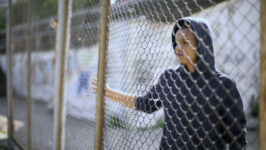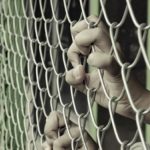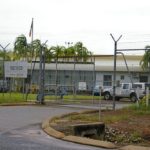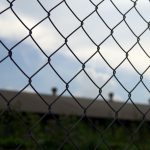Children Vandalise Detention Centre After Being Subjected to ‘Cruel and Degrading’ Treatment

Australia’s harsh youth detention regime is in the spotlight once again this week, after reports that mistreated children in Banksia Hill juvenile detention centre in Perth damaged around 100 of the 250 cells in the facility.
The conduct follows a warning by the head of Perth Children’s Court in February this year that, “if you want to make a monster, this is the way you do it” and a scathing assessment last year by the state’s prison watchdog, which described the treatment of detained youths as “cruel, inhuman and degrading”.
It also follows a riot in the facility last year, which led to a round of parliamentary debates but little change behind the facility’s fences.
And while there is likely to be yet another round of debates regarding the systematic mistreatment of children in the facility, many believe it’s high time that not just this facility but our nation changes the way we deal with troubled youths.
Vandalism, broken toilets, smashed walls
Reports suggest that beds, toilets, communications equipment and even walls between cells have been pulled apart, torn down, vandalised with graffiti and/or destroyed – conduct which youth advocates assert is the result of youth frustration and anger over being subjected to cruel treatment.
A 14-year-old boy who played a leading role in last year’s riot was charged with criminal damage after he climbed onto the roof in protest and damaged air conditioners, windows and aerial antennas.
But when the matter came before a court, evidence was produced that the teen had spent 23 hours a day in the ISU (Intensive Support Unit) during his five-month stint at Banksia Hill, and the confinement had taken its toll.
In this context, the young man’s actions are not difficult to understand.
The entire WA youth justice system is coming under mounting pressure, with recent figures showing that youth crime rates are rising. More than three hundred juvenile offenders were arrested in the region in 2021 and 163 already arrested so far this year.
Children as young as 10 years old are locked up
Australia already has one of the highest rates of juvenile incarceration in the world because in most states children as young as 10 years old are held responsible for their crimes.
Figures also show that the highest proportion of juvenile offenders in detention are indigenous. These are youths who come from seriously disadvantaged backgrounds, and suffer from such things as: generational poverty and substance abuse, little to no education, often undiagnosed learning of mental health disorders.
While criminal offending isn’t acceptable by community standards and young people who break the law should be held accountable, locking youths up is not always the answer. Most psychologists agree that if given the right tools, resources, psychological assistance and nurturing, young people who break the law do have a good chance to turn their lives around and that locking them up, away from family, friends and community does more harm than good.
Did we learn anything from Don Dale?
All of these issues were highlighted by abuses conducted at the Don Dale Youth Detention Centre in the Northern Territory.
Footage from the detention centre which was eventually aired on national television, showed teenage boys being tear-gassed, hooded, threatened, restrained and held in solitary confinement for more than a fortnight.
The systemic mistreatment of young people at the facility led to a Royal Commission into Protection and Detention of children in the Northern Territory. The Royal Commission report recommended a move towards prevention, diversion and rehabilitation, and the raising of the age of criminal responsibility, and at the time, a good number of politicians, commentators, and youth advocates suggested that these recommendations be implemented across the nation, in order to stop the institutionalization and abuse of young people.
Again, little to nothing has been done. In fact, in the case of the Don Dale juvenile facility, no criminal charges have been laid against any adults who engaged in misconduct against the youths, and despite a commitment from the NT Government to shut down the centre after the publication of the findings of the in 2017, to this day, the facility remains operational.
Why do we keep locking up kids when we know better?
Most other states have not fully committed to diversionary programmes and other rehabilitation initiatives either.
Instead, children continue to be locked up in the same way adult offenders are without adequate assessment or consideration for their mental and emotional well-being or any kind of commitment to ensuring that they at least have the opportunity to choose to take a different path.
What inevitably happens over time is that these young people grow up being ‘instutionalised’ and, knowing little to nothing about how to cope in society, they continue to re-offend.
The entire system sets them up to be lifetime criminals – a significant burden on society – and yet we have the research and the know-how to do better. We also know that long-term cost analysis shows it is actually more expensive not to help people to get out of the justice system.
Currently, one Western Australian youth advocacy group is sponsoring a class action lawsuit, against Banksia Hill alleging mistreatment at the facility over the excessive use of solitary confinement.
As stated, the head of the Perth Children’s Court condemned the treatment of a teenage detainee at Banksia Hill, saying: “if you want to make a monster, this is the way you do it”. Just days later, staff at the facility raised concerns, warning increasing violence was putting staff and detainees at high risk.
And the state’s prison watchdog – the Office of the Inspector of Custodial Services – found systemic “cruel, inhuman and degrading treatment” of detainees at Banksia Hill.
How many warning signs do we need? The facility is a pressure cooker that’s damaging some of our most vulnerable Australians.
Banksia Hill has been undergoing some upgrades over the past few years, although these have been hampered somewhat by constant repair work. The facility itself is one matter, the treatment of inmates is another matter entirely.
According to a statement from the WA Government, “a new operating philosophy and service model is being developed that will better enable the delivery of services to young people using trauma-informed principles in line with child safe practices”…. including “new or refined assessment and intervention frameworks, a “redeveloped therapeutic culture that supports positive behaviour management”, individualised case planning and the promotion of cultural responsibility.”
It all sounds very positive. We can only hope that the Western Australian Government demonstrates more progressive action than its other Australian counterparts and actually delivers on a system that will focus on rehabilitation, rather than neglect and mistreatment and that it does so, sooner, rather than later.







